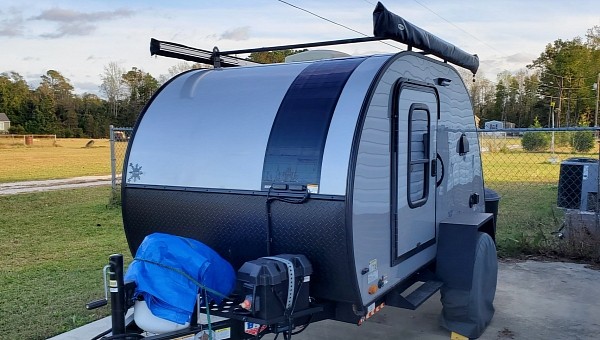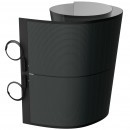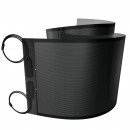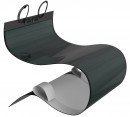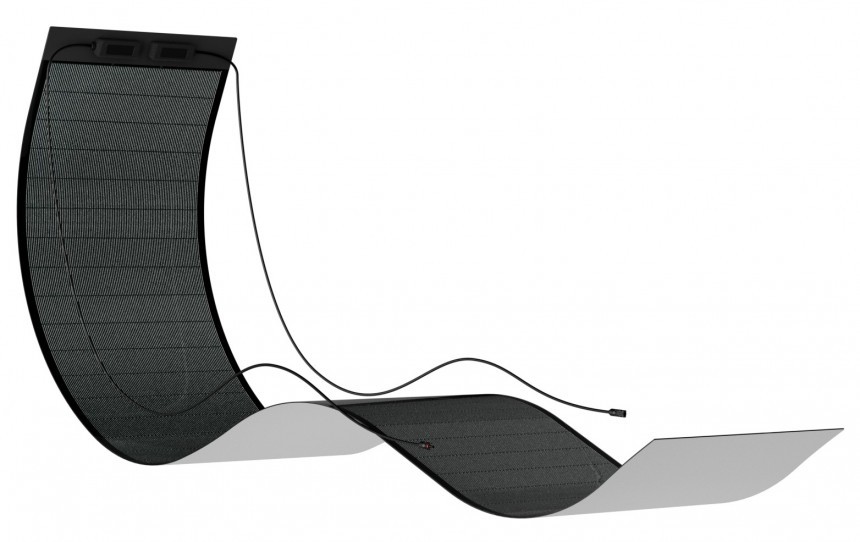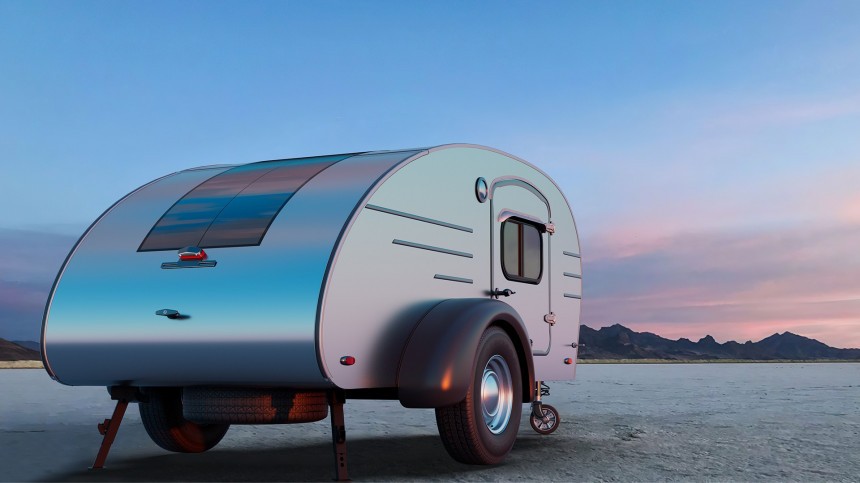While most of us were out getting ready for 2022's holidays, a group of researchers at MIT made yet another breakthrough, this time in solar panel production, and somehow, the RV industry is among the first to start exploring thinner, flexible, and adhesive solar arrays.
If you've been keeping in touch with autoevolution, you probably know that we like to keep tabs on the mobile living and RV industry. Well, recently, we've been seeing a surge of lighter, thinner, flexible, and sometimes adhesive solar panels, and one crew that's in on the action is BougeRV, a team that's been around since about 2017.
Well, one of the products in their electrified and outdoor-oriented gear lineup is the Yuma, a family of solar panels that seem to be tapping into the goodness of technological advancements. And while the Yuma panels are actually CIGS (Copper, Indium, Gallium, Selenide), tech developed as early as 1995, it really won't be long until the RV industry comes up with the sort of thin-film panels like those commonly seen on vehicles like Moon and Mars Rovers. Until then, we can reap the benefits of such gear, because there's plenty.
My previous experience with CIGS panels is one that comes across as rather promising. If you happened to catch the article I did on Sunflare and their own CIGS panels, you know what's in store with these babies. If you don't, all you really need to know is that these puppies are known to be as close to indestructible as possible with current affordable tech.
But several aspects of CIGS contribute to their durability, and one of the most important ones is the lack of any silicon. Not only does this mean that your panel shouldn't shatter, but it's also lighter. Once a composite or polymer film is placed on top for protection, BougeRV claims you can even walk on your panel.
Based on my previous experience with CIGS panels, that's true, but God forbid there's a pebble stuck in the groove of your boot. I recommend socks for this one. Because of their makeup, CIGS are also rather thin, and BougeRV tells us the Yuma panels are just a tad over 1 millimeter (0.04 inches) thick, thus, much more compact than classic silicone panels.
However, it's the flexibility of these trinkets that brings a lot of value to an array of industries. Initially, CIGS were used heavily by the boating industry, mainly because they could be adapted to an array of surface shapes, and that's true for Yumas too. From campers to trucks, RVs, your mom's van, or whatever smoothened surface you have to work with, the Yuma can be found soaking up rays from our precious sun. But, for this sort of magic, you'll need to opt for the adhesive Yuma versions; they're basically peel-and-stick, so putting them to work should be rather easy too. With a weight of 7 pounds (3.2 kilograms) for a 200-watt thin-film array, you shouldn't have to worry about overloading your trailer or vehicle.
But durability isn't all that solar panels are about; they need to convert energy into a usable form. In short, they need to be efficient. Well, CIGS are notorious for higher output than monocrystalline panels, especially when shaded. According to BougeRV, the Yumas showcase an average of 16% efficiency for the 200-watt rectangle version going for $580 (€530 at current exchange rates).
More on the efficiency and output of CIGS, we also need to look at how well they can perform in low-light conditions. According to BougeRV, their panels, be they 100-watt or 200-watt, can offer up to 38% more energy than traditional gear. I'm thinking about reaching out to this crew and getting my hands on a Yuma to test that number. Oh, and because of their makeup, CIGS can often sustain damage to one or more cells, and the rest can keep on doing what they do best.
What does all this mean for folks with vehicles that are just waiting for the snow to thaw and the weather to warm up? Well, quite a bit, actually, part of which is the price; relatively affordable, if you ask me. Then there's the ease with which you can apply these babies to the roof of your RV, boat, or camper. Sure, you may need to drill some holes if you want a long-term and watertight solution, but if you're on the go all the time, just leave your panel unstuck and whip it out when needed.
When I first started this article, I mentioned something about MIT working its magic in the solar panel industry. Well, the new progression in this tech is sure to lead to even thinner, lighter, more durable, and obviously cheaper solar panels and arrays, and frankly, it won't be long before some teams pop up on the market with just this newfound gear. When that happens, be sure that teams like BougeRV will be rolling with the punches, and we'll be sure to bring you the news.
Well, one of the products in their electrified and outdoor-oriented gear lineup is the Yuma, a family of solar panels that seem to be tapping into the goodness of technological advancements. And while the Yuma panels are actually CIGS (Copper, Indium, Gallium, Selenide), tech developed as early as 1995, it really won't be long until the RV industry comes up with the sort of thin-film panels like those commonly seen on vehicles like Moon and Mars Rovers. Until then, we can reap the benefits of such gear, because there's plenty.
My previous experience with CIGS panels is one that comes across as rather promising. If you happened to catch the article I did on Sunflare and their own CIGS panels, you know what's in store with these babies. If you don't, all you really need to know is that these puppies are known to be as close to indestructible as possible with current affordable tech.
But several aspects of CIGS contribute to their durability, and one of the most important ones is the lack of any silicon. Not only does this mean that your panel shouldn't shatter, but it's also lighter. Once a composite or polymer film is placed on top for protection, BougeRV claims you can even walk on your panel.
However, it's the flexibility of these trinkets that brings a lot of value to an array of industries. Initially, CIGS were used heavily by the boating industry, mainly because they could be adapted to an array of surface shapes, and that's true for Yumas too. From campers to trucks, RVs, your mom's van, or whatever smoothened surface you have to work with, the Yuma can be found soaking up rays from our precious sun. But, for this sort of magic, you'll need to opt for the adhesive Yuma versions; they're basically peel-and-stick, so putting them to work should be rather easy too. With a weight of 7 pounds (3.2 kilograms) for a 200-watt thin-film array, you shouldn't have to worry about overloading your trailer or vehicle.
But durability isn't all that solar panels are about; they need to convert energy into a usable form. In short, they need to be efficient. Well, CIGS are notorious for higher output than monocrystalline panels, especially when shaded. According to BougeRV, the Yumas showcase an average of 16% efficiency for the 200-watt rectangle version going for $580 (€530 at current exchange rates).
What does all this mean for folks with vehicles that are just waiting for the snow to thaw and the weather to warm up? Well, quite a bit, actually, part of which is the price; relatively affordable, if you ask me. Then there's the ease with which you can apply these babies to the roof of your RV, boat, or camper. Sure, you may need to drill some holes if you want a long-term and watertight solution, but if you're on the go all the time, just leave your panel unstuck and whip it out when needed.
When I first started this article, I mentioned something about MIT working its magic in the solar panel industry. Well, the new progression in this tech is sure to lead to even thinner, lighter, more durable, and obviously cheaper solar panels and arrays, and frankly, it won't be long before some teams pop up on the market with just this newfound gear. When that happens, be sure that teams like BougeRV will be rolling with the punches, and we'll be sure to bring you the news.
